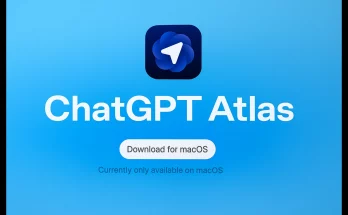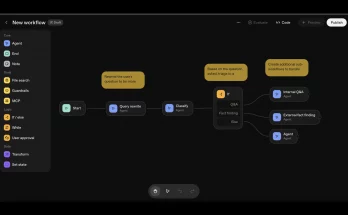OpenAI Unveils o3 & o4-mini: The Future of AI Reasoning
OpenAI has made a significant leap in artificial intelligence with the launch of its new o3 and o4-mini reasoning AI models. This exciting announcement comes in the wake of the recent release of the GPT-4.1 models, expanding OpenAI’s already impressive lineup. The introduction of these new models marks a turning point in how AI understands and processes information, incorporating advanced visual reasoning capabilities that set a new standard for AI interactions.
Meet o3 and o4-mini: A New Level of AI Reasoning
The o3 model, which was previewed in December, is touted as OpenAI’s most advanced reasoning model to date. On the other hand, o4-mini serves as a smaller, more efficient alternative, designed to deliver quality responses without straining resources. Both models are built to “think before they speak,” taking more time to process prompts for enhanced quality of responses.
Enhanced Performance Across the Board
Owing to their advanced design, both o3 and o4-mini exhibit strong performance in crucial areas such as:
- Coding
- Mathematics
- Scientific tasks
Importantly, the latest models now include an extraordinary feature: visual understanding. This capability allows them to not just see an image but to utilize visual information effectively during reasoning.
Revolutionizing Image Processing in AI
o3 and o4-mini are OpenAI’s first models designed to “think with images.” Users can upload images, even those that are blurry or low quality, and the models will still understand and respond accurately. This offers a practical advantage for users who require nuanced visual interpretations.
Autonomous Tools for Complex Problem Solving
Another groundbreaking aspect of these models is their ability to utilize various ChatGPT tools independently. This includes:
- Web browsing
- Python coding
- Image generation
- Image understanding
This adds a new dimension to AI interactions, as users can now perform complex, multi-step tasks more efficiently. For example, during a livestream demonstration, researchers showed how o3 could analyze a scientific research poster, browse the internet for supplementary information, and generate conclusions not expressly mentioned in the original text.
Superior Instruction Following
According to OpenAI, both models outperform prior generations on multiple benchmarks—even when not utilizing their enhanced toolsets. They promise improved instruction-following abilities and more reliable, verifiable responses, marking a significant step forward in AI reasoning.
Converging Multiple Fields of Expertise
A recent report suggested that the new models could synthesize information from different disciplines to propose innovative experiments. For instance, they might offer unique insights into complex subjects such as:
- Nuclear fission
- Pathogen detection
While OpenAI has not yet commented directly on these capabilities, the implications are vast and far-reaching for scientific and technical fields.
How to Access o3 and o4-mini
The new o3 and o4-mini models are now available to subscribers, including those on ChatGPT Plus, Pro, and Team plans. Users will see them in the model picker as:
- o3
- o4-mini
- o4-mini-high
These models will replace the previous versions, aligning with OpenAI’s objectives to provide more powerful reasoning options.
Safety and Ethics in AI Development
OpenAI ensured that the new releases underwent rigorous safety testing. Both models have been assessed under the updated Preparedness Framework, guaranteeing consistent and safe user experiences.



